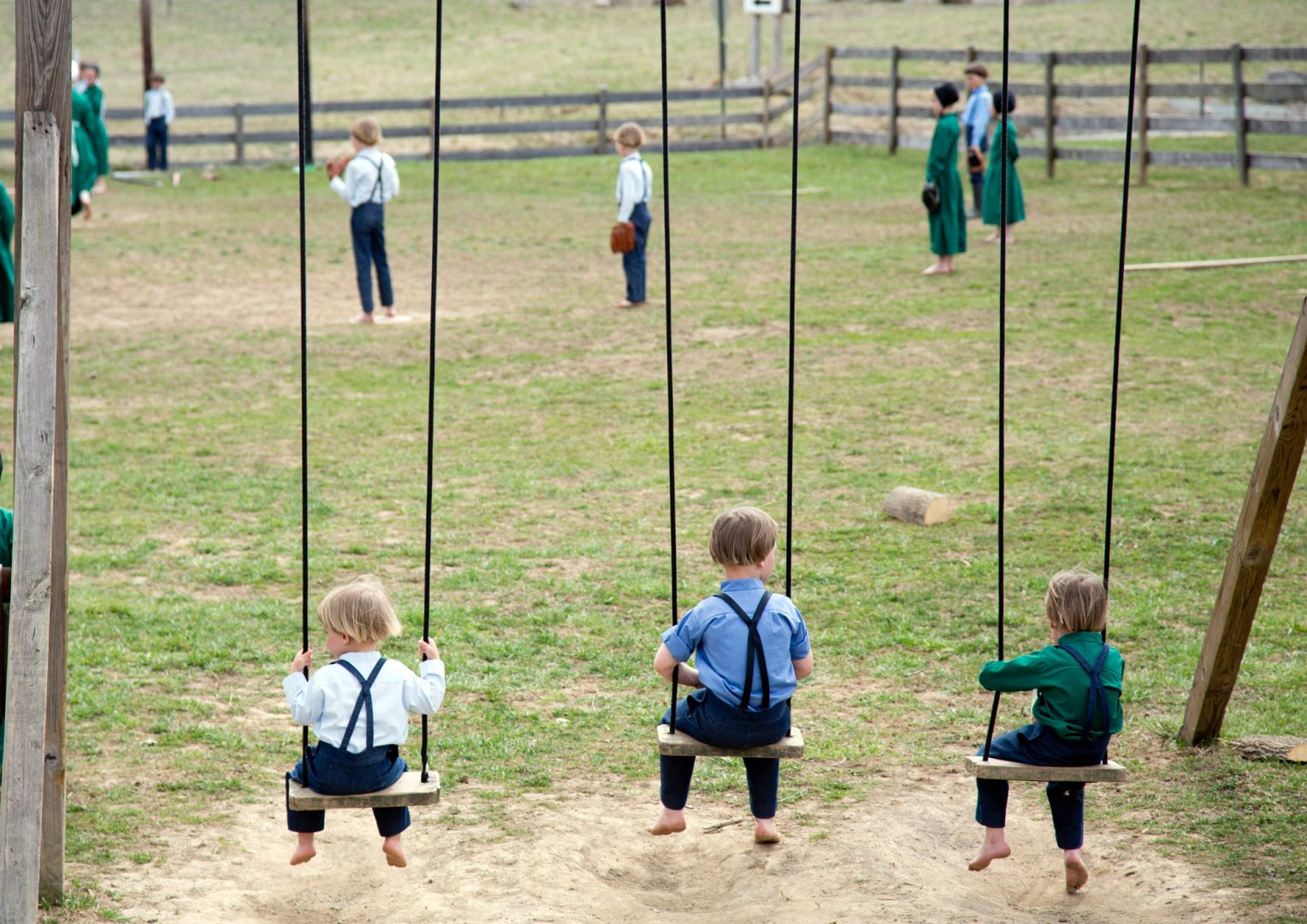
FILE PHOTO: Amish children play in the field outside a schoolhouse in Bergholz, Ohio on April 9, 2013.
Scott R. Galvin / AP Photo

FILE PHOTO: Amish children play in the field outside a schoolhouse in Bergholz, Ohio on April 9, 2013.
Scott R. Galvin / AP Photo

Scott R. Galvin / AP Photo
FILE PHOTO: Amish children play in the field outside a schoolhouse in Bergholz, Ohio on April 9, 2013.
(Lancaster) — In mid-March, Pennsylvania Gov. Tom Wolf ordered all Pennsylvania schools to close, prompting an abrupt shutdown of the state’s public and private schools – and, it turns out, Amish one-room schoolhouses.
Local experts in Amish and Old Order Mennonite culture say most, if not all, of the 250-or-so area Amish-run schools closed in accordance with Wolf’s order. And, just like at many traditional schools, learning never stopped.
While most schools in the state shifted instruction online, Amish schools switched to remote assignments with paper and pencil.
“It was kind of their version of virtual education,” said Charles Jantzi, a psychology professor at Messiah College who has done extensive research on the Amish and Old Order Mennonites, particularly related to mental health and social media.
Teachers, often young women who haven’t married yet, sent home worksheets and textbooks with directions on how to finish the school year. Students occasionally visited the teacher at school or her home so she could grade their work. Teachers replenished assignments if necessary. Some even gave private, at-home lessons.
Such a task wouldn’t be all that difficult for a teacher, said Donald Kraybill, senior fellow emeritus at Elizabethtown College’s Young Center for Anabaptist and Pietist Studies.
There’s often less than 30 kids in a single school, and many of them could be siblings in the same household, Kraybill said. The teacher could walk, scooter, take a horse and buggy or use an “Amish taxi” – a non-Amish, or English, driver – depending on how far away she lives.
Still, this wasn’t typical for Amish students.
“Often Amish schools don’t assign a lot of homework, so doing your work at home is a little unusual,” said Steven Nolt, a senior scholar at the Young Center and professor of history and Anabaptist studies at E-town.
Letters that Nolt pulled from Amish periodicals describe a vastly different education system during the coronavirus pandemic.
“Our schedules have dramatically changed since the virus outbreak,” one teacher said. “… (W)e told the school children to take all their belongings and books home with them. We gave them schedules as a guide to finish their books at home.”
Another letter: “The Amish schools in our community are also not having school at this time. Though the teachers are handing out schoolwork two times a week to at least try to stay on schedule. … So with no school and (construction) work, and families all together at home, it is making for nice family times together.”
The decision to close schools was guided by the local Amish Steering Committee, a group of laymen that serves as a liaison to various levels of government, but ultimately made by parent-operated boards of trustees at each school, experts said.
Amish communities are much more insular than English culture, so schools being closed doesn’t mean kids didn’t interact, say, across backyards or on the farm, experts said. But the decision to close, they said, ultimately came down to respect.
“I would say that, early on, the Amish took COVID seriously and wanted to both respect and honor the public health aspect of it,” Jantzi said.
To ensure continuity of education was a clear objective from the start of the shutdown; even though their schools only run through eighth grade, the Amish take education seriously, Jantzi said.
“I’m guessing given the attitude toward school … they would encourage their children to do their schoolwork,” he said.
With less holiday breaks, Amish students are now finished with their 180-day school year. Typically, they hold end-of-year picnics with food, maybe a student performance and some softball, to celebrate. It’s unclear, however, if or when those will happen this year because of the virus outbreak.
The days of journalism’s one-way street of simply producing stories for the public have long been over. Now, it’s time to find better ways to interact with you and ensure we meet your high standards of what a credible media organization should be.